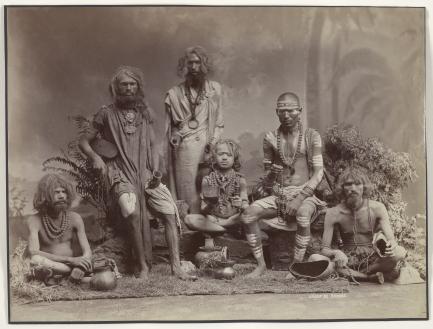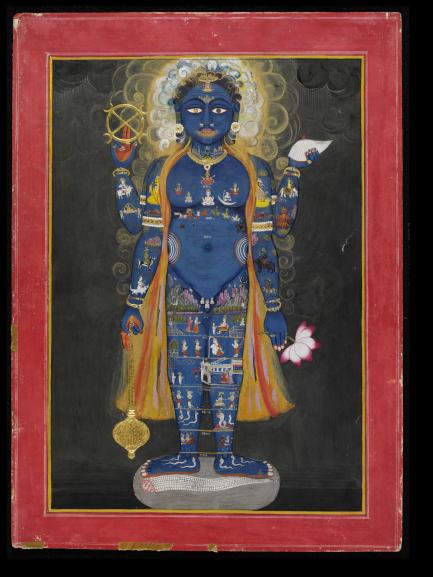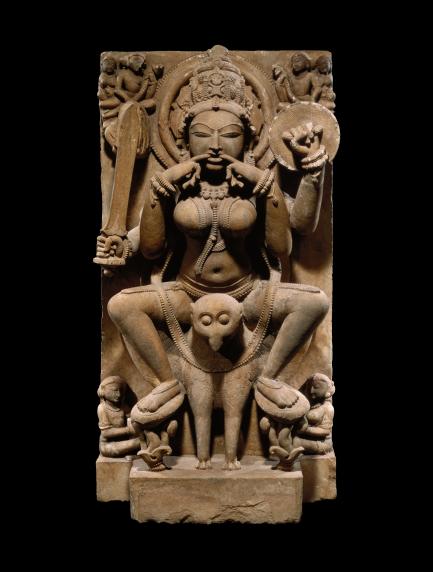Smithsonian’s Sackler Gallery Debuts World’s First Exhibition of the Visual History of Yoga
Note: This updated news was originally released Jan. 14, 2013
Yoga is a global phenomenon, practiced by millions of people seeking spiritual insight or better health. Few, however, are aware of yoga’s rich diversity and historical transformations. Opening Oct. 19 at the Arthur M. Sackler Gallery, “Yoga: The Art of Transformation”—the world’s first exhibition about the discipline’s visual history—will reveal its fascinating meanings and histories over the past 2,000 years.
“The Art of Transformation,” on view through Jan. 26, 2014, explores yoga’s philosophies and its goals of transforming body and consciousness, its importance within multiple religious and secular arenas, and the varied roles that yogis played in society, from sages to spies. To support the exhibition, the museum is launching the Smithsonian’s first major crowdfunding campaign on May 29. “Together We’re One,” will run through July 1, raising funds for exhibition production, Web content, catalog printing and free public programs for adults and families. Beginning late May, supporters can learn more, donate and download campaign materials—including e-cards and desktop and smartphone backgrounds—at asia.si.edu/yoga or by contacting yoga@si.edu. Exhibition curator Debra Diamond worked with an interdisciplinary team of scholars to compile a remarkable survey of Indian art, with more than 130 objects from 25 museums and private collections in India, Europe and the United States. As much of yoga’s history remains shrouded in mystery, this comprehensive look at yoga’s visual culture marks the start of a new field of study. “These works of art allow us to trace, often for the first time, yoga’s meanings across the diverse social landscapes of India,” said Diamond, curator of South Asian art at the Arthur M. Sackler Gallery and Freer Gallery of Art. “United for the first time, they not only invite aesthetic wonder, but also unlock the past—opening a portal onto yoga’s surprisingly down-to-earth aspects over 2,000 years.”
Renowned masterpieces of painting and sculpture, as well as popular images weave parallel stories of yoga as an individual path and as a cultural force, both in India and abroad. The exhibition features 90 stone and bronze sculptures, richly illustrated manuscripts and lavish court painitngs created from the third to the early 19th century A.D. Objects such as a 12-foot scroll of the chakra body and the earliest illustrated Yoga Vasishta (an important Hindu philosophical text) illuminate central tenets of yogic practice and philosophy. Other works shed light on yoga’s obscured histories and archetypes, that range from tantric yogini goddesses to militant ascetics and romantic heroes. Later 19th- and early 20th-century materials—including photographs, missionary postcards, magic posters, medical illustrations and early films—chart the vilifications of yoga in the colonial period and the subsequent emergence of the modern discipline in India.
Exhibition highlights include an installation that reunites for the first time three monumental stone yogini goddesses from a 10th-century Chola temple, 10 folios from the first illustrated compilation of asanas (yogic postures) made for a Mughal emperor in 1602 and never before exhibited in the U.S. and a Thomas Edison film, Hindoo Fakir (1906), the first movie produced about India.
A full range of public programs, concerts and family activities, including a November symposium, will accompany the Sackler’s presentation. The exhibition catalog, Yoga: The Art of Transformation, is the first publication on the visual history of yoga and includes contributions by noted scholars Carl Ernst, David Gordon White, Mark Singleton, Joseph Alter, Tamara Sears, Sita Reddy and Sir James Mallinson. It will be available for purchase in October.
Following its Washington, D.C., debut, “The Art of Transformation” will travel to the San Francisco Asian Art Museum (Feb. 21–May 25, 2014) and the Cleveland Museum of Art (June 22–Sep. 7, 2014).
The Arthur M. Sackler Gallery, located at 1050 Independence Avenue S.W., and the adjacent Freer Gallery of Art, located at 12th Street and Independence Avenue S.W., are on the National Mall in Washington, D.C. Hours are 10 a.m. to 5:30 p.m. every day (closed Dec. 25), and admission is free. The galleries are located near the Smithsonian Metrorail station on the Blue and Orange lines. For more information about the Freer and Sackler galleries and their exhibitions, programs and other public events, visit www.asia.si.edu. For general Smithsonian information, call (202) 633-1000.
# # #
SI-193-2013




